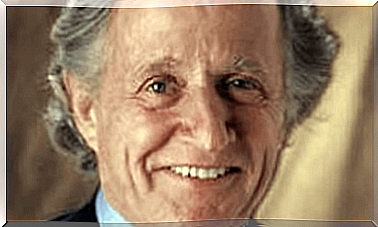Leadership And Social Identity

What does it mean to be a leader? Throughout history, many people have stood out for their ability to lead the masses. However, one of the questions asked by social psychology is the reason for this article. The classic strands of the study of leadership tried to find a series of characteristics that formed the leader and the reasons why they identify with him. However, there is too much variability among different leaders to build a single ranking. However, a less individual-centered view that is oriented towards social group processes will help to better understand the issue. We must assess, for example, the relationship between leadership and social identity.
John Adair once said that the most important word for a leader is “we” and the least important is “I”. This observation reveals a point of view of social identity. Leadership is maintained through a “we”, a group that unites us and leads us to the same goal. In this way, followers will abandon their personal interests and act on behalf of the group.
Before explaining how the leader is born through group processes and social identity, we will analyze the classic perspectives of the study of leadership. In this way, we will have a more complete view of all aspects involved in the leadership process.

Classic Approaches to Leadership
When we talk about classic approaches to leadership, we are focusing on the idea of the “Big Man” and his personality. This conception goes back, at least, to Plato’s writings, in search of the substance that constitutes the leader. The discussion about personality or its characteristics has been going on for about 2500 years.
In general, from this perspective, it is understood that the leader has great abilities to direct, manage and motivate the rest of the people. Furthermore, he is usually recognized by an essential characteristic, called “charisma“. But what is charisma? Throughout history, this feature has taken on many extremely varied meanings. In fact, this gave rise to tautological definitions, such as this: “charisma makes a leader and to be a leader is to have charisma”.
The biggest problem arising from these perspectives is the heterogeneity we can find among leaders. Several studies have been carried out looking at similarities between leaders. Furthermore, these studies sought to define which characteristics made someone become a leader or not. However, the results do not offer clear conclusions. The variable that best predicts leadership is intelligence, which represents 5% of the variance, but 95% of the variance would be caused by variables we do not know.
Therefore, personal identity is a poor mechanism for predicting leadership. However, we can see what happens if we look at the group’s identity or the leader’s social identity.
leadership and social identity
First, if you are not well versed in what the self-categorization and social identity processes mean, you can click this link. Knowing these theories will help you to understand more deeply what we explain below.
An essential aspect of being a leader is having followers who recognize you as a leader, either implicitly or explicitly. That is, behind each leader there is a group, which will have its own group identity. This identity will be reflected in a series of characteristics and goals that define the group. Therefore, individuals within it will be identified with a large part of such characteristics.

So if followers are the ones who choose the leader, what did they rely on to determine leadership? It is easy to imagine that if followers have their active social identity, they will look for someone who represents the characteristics and goals of the group. In their search, applicants will compare the rank of leader with the identity of the group. Only then will one of them stand out for being the exact prototype of the group, and many followers will see him as the leader of the group.
The leader is one who lacks personal identity from the followers’ point of view. Your whole being represents the group. This makes you the ideal person to play this role. After all, if he is equal to the group, he cannot go against the group’s interests. Also, when all members share a group identity, there will be strong identification and empathy with the leader.
This new viewpoint overcomes the shortcomings of classic leadership models. Explaining the leader of each specific group identity helps us understand the existence of great variability among different leaders. But still, there is much to investigate and many processes to understand within leadership mechanisms.









